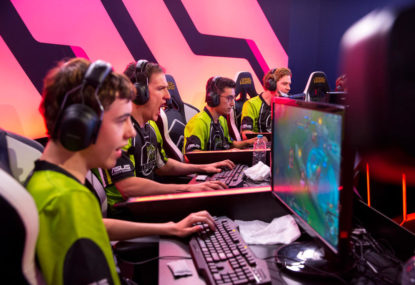2022 Trivia: The Roar's jam-packed Christmas Day sports quiz!
The jam-packed month-by-month quiz full of 2022 sports trivia!

SKT and KT are making headlines with their superstar signings, but those aren’t the most interesting moves of the off-season. The telecom giants have been the richest teams in Korea since the early 2000’s, and they have a long history of going after the biggest names.
What was more intriguing was seeing ROX Tigers, Afreeca Freecs, and CJ Entus all parts ways with the entirety of their rosters – additionally, Jin Air Green Wings and LongZhu have released many of their key members.
One might think that this is a disaster for the teams involved. For the short term, at least, that will probably end up being the case. Yet, it’s telling that ROX and Afreeca have rushed to sign veteran head coaches, despite not having a single player confirmed for next season.
The teams have bet on their ability find replacement talents, develop them, and ultimately succeed with them.
Is this kind of institutional faith warranted?
The 2016 World Championship may help to answer that question. Two years ago, Samsung Galaxy infamously released every single member of their 2014 world champion team, unwilling to match huge contract offers from China.
After two years of rebuilding, Samsung returned to the world finals with an entirely new roster of players, and came within a single game of winning a second world title.
Of course, ‘16 Samsung are an unusually successful case. Few teams would realistically expect to reach the world finals two years after gutting their entire roster. Still, the two underlying principles of the Samsung rebuild – 1) Everyone is dispensable, and 2) There is an oversupply of talent – have held largely true over the history of Korean League of Legends.
An example we’re all too familiar with is the annual “exodus” of star players to foreign leagues. As we all know, it’s done little to erode Korea’s position as League’s superpower.
Ultimately, the most important institution isn’t that of any individual team or coaching staff, but that of the Korean esports environment itself. Somehow, it continues to produce an endless stream of young, talented gamers who are desperate to grasp onto any opportunity given to them.
We’re not quite sure how this institution actually works (or else serviceable North American players wouldn’t be at such a premium), but we do know it’s nigh infallible.
In the last couple of years, we’ve seen a handful of Korean teams try to push the limits of this institution. Samsung’s incredible resurgence aside, newer teams such as ESC Ever, Anarchy/Afreeca, and MVP also showed up in the Korean scene with squads full of relatively obscure, untested players. All three teams have been remarkably competitive, and have generally outperformed expectations.
Thus, it’s not a surprise that this off-season, other Korean teams are resorting to drastic rebuilding measures. Replacing every single player will never be the preferred course of action – it may not even have been a matter of choice for some teams – but it appears to be a much more palatable and realistic option than before.
It’s possible that these teams are going a step too far, and that by pressing the reset button they are condemning themselves to years of mediocrity.
Yet, should they emerge from rebuilding in decent shape, we would have to face a most difficult question:
What are the ramifications of a competitive scene where the players don’t really matter?